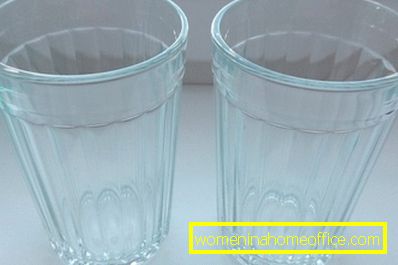How to measure 100 g of flour with the help of available
In cooking, almost no recipe is complete without flour, and if some dishes allow you to collect ingredients by eye, most of them still require the use of scales in the process, so as not to be mistaken with the proportions. However, what to do if this faithful assistant was unavailable at a certain moment? It's time to remember the ways to measure the volume without them, improvised containers, as our grandmothers did.
How to measure 100 grams of flour without scales?

The simplest way, of course, is a measuring cup, on which there are risks in increments of 50 and / or 25 g. Such capacity often allows you to weigh liquids and some bulk products: flour and cereals. There are no problems with round numbers when using it, especially since it contains 150 g of flour, which is slightly less than 250 ml of water. There are also dimensional jugs that have a large volume: you can get a little more than 1 liter of water or 700 g of flour, as well as 1000 g of sugar. According to the risks in this tank, 1/8 l of water will be equal to 100 g of flour.
However, sometimes it happens that in general there are no measuring devices with a clear indication of the volumes and weights. How to get out of the situation?
- Ordinary spoons, which are present in the drawer of any kitchen, can save the situation. You can use both canteens and tea or dessert. To do this, simply know how much one or another device will take, and then understand how many times it will be necessary to recruit a product to achieve the desired volume. Weight 1 tbsp. flour will be 10 g, while 1 dessert spoon is 7 g, and 1 tsp. - 4 g. These figures are relevant for a set without a slide, i.e. when the part protruding above the edge of the spoon is cut off with a knife. If, however, scoop flour, leave as is, in 1 tbsp. there will be already 15 g, in the dessert - 12 g, and in 1 tsp - 5

- A faceted glass, which several decades ago was exactly in every Soviet kitchen, is also well suited for weighing, but with it a little more difficult. The fact is that it has the shape of a trapezium, i.e. the upper circumference is greater than the lower one, and in the glass to the risks (lower edge of the rim) 140 g of flour will be added, to the edge - 150 g of flour. Therefore, 100 g can be taken either through a constant set to the edge, after which 10 g can be taken from above to maintain accuracy; or divide the volume into 3 parts by eye, considering that these parts will not be equal in height - the lower ones are higher than the upper ones. If such a "trick" does not work, take an ordinary cylindrical cup of 250 ml, pour flour into it to the edge, then divide the entire volume into 3 parts and take the necessary 2/3.
- There is also a non-standard way for which you need a ruler and a large sheet of paper. If you purchase 1 kg of flour in rectangular boxes / paper packages, the paper is not needed: it is enough to divide the height into 10 parts with a ruler and pick up 1/10. If not, draw a rectangle of 10 * 20 cm on paper, break the long side into 2 cm pieces. Pour 1 kg of flour into this form, flatten it with a knife to get a three-dimensional figure, cut 1/10 part, parameters which 10 * 2 cm. It will be exactly 100 grams of flour.
In conclusion, it is worth noting that the above methods are focused on wheat flour with a moisture content of 14%. As soon as this indicator rises or falls, the weight of the bulk product starts to change in direct proportion. In addition, even at normal humidity, if you stamp the flour in the tank, its weight at the same volume increases. A whole grain flour a priori will be harder, because it has a more dense shell.